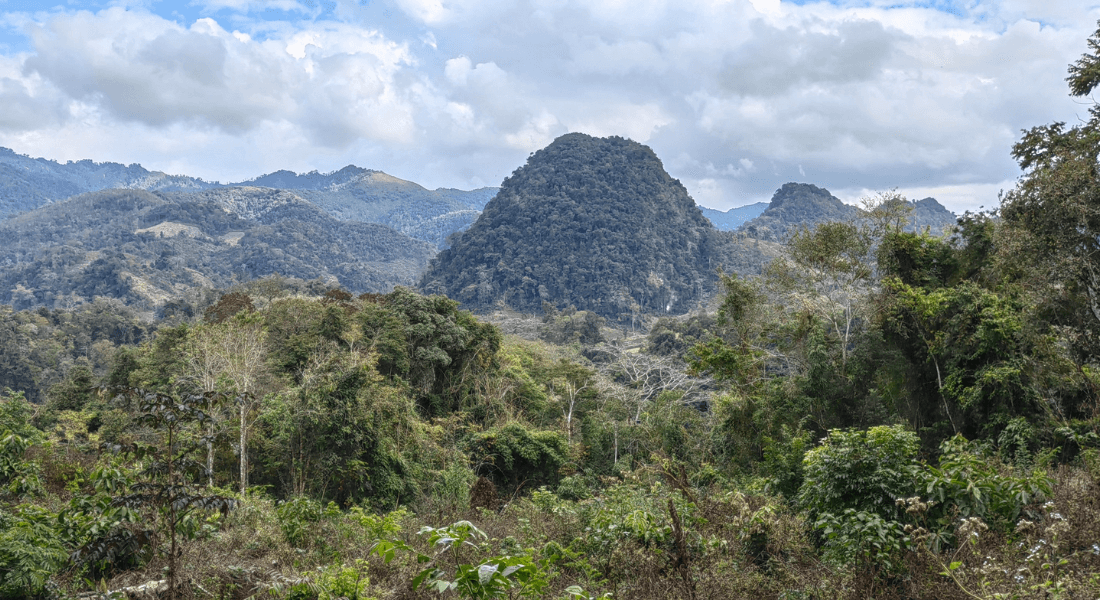Modern Humans Arrived In Southeast Asia 40,000 Years Earlier Than We Thought
ANCIENT MIGRATION An international research team jointly lead by Globe Institute show one of the earliest modern humans migrations out of Africa. The study is published in Nature Communications.
 Here we look towards the cave in Northern Laos where the remains was found (Photo: Fabrice Demeter). When the modern human species, Homo sapiens, first arrived in Southeast Asia on our way from Africa to Australia, we left clues to our presence in the form of fossilized bone and teeth that accumulated over thousands of years deep in a cave.
Here we look towards the cave in Northern Laos where the remains was found (Photo: Fabrice Demeter). When the modern human species, Homo sapiens, first arrived in Southeast Asia on our way from Africa to Australia, we left clues to our presence in the form of fossilized bone and teeth that accumulated over thousands of years deep in a cave.
The latest evidence from Tam Pà Ling Cave in northern Laos demonstrates beyond doubt that modern humans spread from Africa through Arabia to Asia much earlier than previously thought, new study shows.
“We found human remains in Laos dating to 86-68,000 years, attesting the presence of our species in Southeast Asia much earlier than what was commonly known,” explains joint lead author of the new study Fabrice Demeter. He is Assistant Professor at the Globe Institute’s Lundbeck Foundation GeoGenetics Centre at the University of Copenhagen.
Although these early migrations did not contribute significantly to our modern day populations as genetic says, this pushes back the arrival time in mainland Southeast Asia by ~40,000 years.
The new chronology revealed that there had a been a human presence in this area for more than 56,000 years.
The study also confirms that our ancestors didn’t just follow coastlines and islands. They travelled through forested regions, most likely along river valleys. Some then moved on through Southeast Asia to become Australia’s First People.
“Tam Pà ling plays a key role in the storey of modern human migration through Asia but its significance and value is only just being recognised,” says Fabrice Demeter.
Controversial cave
Three Australian Universities contributed to the project. Macquarie University and Southern Cross University dated samples using multiple dating techniques. Flinders University showed that the sediment in the cave had been laid down in layers without disturbance over tens of thousands of years.
Since the first excavation and the discovery of a skull and mandible in 2009, the cave has been controversial. Evidence for our earliest journeys from Africa into Southeast Asia is usually dominated by island locations such as Sumatra, Philippines and Borneo.
This was before Tam Pà Ling, an upland cave site more than 300 kilometres from the sea in northern Laos, started divulging its secrets. The skull and jaw bone were identified as Homo sapiens who had clearly migrated through this region.
But when? As is usual in questions of human dispersal the debate comes down to timing. Unfortunately the evidence was hard to date.
The human fossils cannot be directly dated as the site is a world heritage area and the fossils are protected by Laotian law. There are very few animal bones or suitable cave decorations to date, and it’s too old for radiocarbon dating. This placed a heavy burden on the luminescence dating of sediments to form the backbone of the timeline.
New technique revealed hidden secrets
Luminescence dating relies on a light sensitive signal that is reset to zero when exposed to light but builds up over time when shielded from light during burial.
It was originally used to constrain the burial sediments that encased the fossils.
“Without luminescence dating this vital evidence would still have no timeline and the site would be overlooked in the accepted path of dispersal through the region,” says geochronologist Associate Professor Kira Westaway from Macquarie University.
“Luckily the technique is versatile and can be adapted for different challenges.”
These techniques returned a minimum age of 46,000 years ago – a chronology in line with the expected timing of Homo sapiens arrival in Southeast Asia. But the cave hadn’t finished divulging its secrets.
From 2010-2023 annual excavations (only held back by three years of lockdowns) revealed more and more evidence that Homo sapiens had passed through en route to Australia. A staggering seven pieces of human skeleton were found at intervals through 4.5 m of sediment, pushing the potential timeline far back into the realms of the earliest Homo sapiens migrations into this region.
In this study, the team overcame these issues by creatively applying strategic dating techniques where possible, such as the uranium-series dating of a stalactite tip that had been buried in sediment and the use of uranium series dating coupled with electron spin resonance dating techniques to two rare, but complete, bovid teeth unearthed at 6.50 m.
Publication: Sarah E. Freidline, et al., Early presence of Homo sapiens in Southeast Asia by 86–68 kyr at Tam Pà Ling, Northern Laos, Nature Communications (2023). DOI: 10.1038/s41467-023-38715-y.
Original Story Source: University of Copenhagen

 Alerts Sign-up
Alerts Sign-up